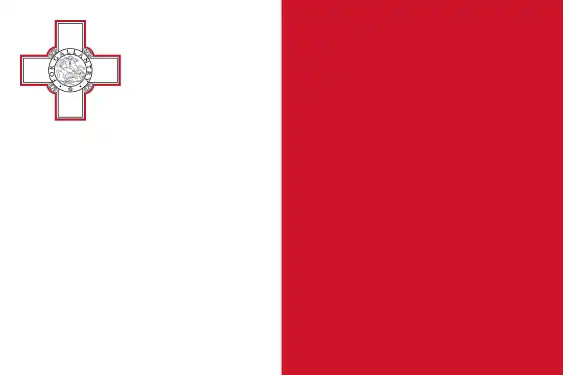| Total population | |
|---|---|
| Maltese-born residents 41,000 (ONS estimate) | |
| Regions with significant populations | |
| London, Cardiff, Manchester | |
| Languages | |
| English, Maltese, Italian | |
| Religion | |
| Roman Catholicism | |
| Related ethnic groups | |
| Maltese diaspora |
| Part of a series on |
| British people |
|---|
| United Kingdom |
| Eastern European |
| Northern European |
| Southern European |
| Western European |
| Central Asian |
| East Asian |
| South Asian |
| Southeast Asian |
| West Asian |
| African and Afro-Caribbean |
| Northern American |
| South American |
| Oceanian |
Maltese people in the United Kingdom are citizens or residents of the United Kingdom who originate from the country of Malta.
History

Prior to the passage of the Commonwealth Immigrants Act of 1962, there were few restrictions on Maltese migration to the UK. Malta had experienced significant emigration, particularly as a result of the collapse of a construction boom in 1907 and after World War II, when the birth rate increased significantly. In the nineteenth century, most migration from Malta had been to North Africa and the Middle East, with high rates of return migration, but in the twentieth century most emigrants went to destinations in the New World, particularly the United States and Australia. Numbers opting for the UK were smaller, despite the colonial links. Indeed, prior to World War I, there were very few Maltese in the UK, except for a community in Cardiff. The UK was seen as a distant and cold country by most Maltese.[2] Between 1919 and 1929, 3,354 Maltese were recorded as sailing to the UK, with 1,445 of these returning in later years. The remainder did not necessarily all stay in the UK, however, with many subsequently moving on to Australia. Nonetheless, by 1932, a street adjoining Commercial Road in London was home to a Maltese community. Many of these Maltese people worked in London's docks. Similar communities existed around the docks in Chatham and Portsmouth.[2]
After World War Two, Malta's Emigration Department would assist emigrants with the cost of their travel. Between 1948 and 1967, 30 per cent of the population emigrated.[3] After 1962, Maltese people required vouchers to migrate to the UK, but these were relatively easy to obtain from the Emigration Department until 1971. The Emigration Department would arrange for prospective migrants to be interviewed by British firms in order to allow their passage to the UK to fill labour shortages. At this time, it was also common for Maltese women to marry British military servicemen, and for Maltese to join British merchant ships. Migration statistics recorded in Malta and the UK differ in terms of the number of Maltese migrants recorded. Maltese statistics suggest that 8,282 people left Malta for the UK between 1963 and 1970 (inclusive), with 949 recorded as returning. British statistics, meanwhile, suggest that 8,110 Maltese migrants arrived in the same period, excluding students, diplomats, seamen, visitors and their families.[3] Between 1946 and the late 1970s, over 140,000 people left Malta on the assisted passage scheme, with 57.6 per cent migrating to Australia, 22 per cent to the UK, 13 per cent to Canada and 7 per cent to the United States.[4]
Significant seasonal migration to the UK started in 1962. This year saw 70 Maltese women recruited to work in British fruit and vegetable canneries for six months. By 1967–69, 250 Maltese people per year were moving to the UK for seasonal work, mostly in the canning, ice cream manufacture and hotel and catering sectors. The seasonal migration of female workers was organised by the Emigrants' Commission of the Catholic Church in Malta.[3]
According to the Malta Emigration Museum, between the end of World War Two and 1996, a total of 31,489 migrants left Malta for the UK. 12,659 subsequently returned to Malta. Net migration over the period was therefore 18,830.[1]
Demographics
The 2001 UK Census recorded 30,178 Maltese-born people resident in the UK.[5] The Office for National Statistics estimates that the equivalent figure for 2009 was 28,000.[6] By contrast, there were 46,998 Maltese-born residents recorded by the 2001 Australian Census, 9,525 by the 2001 Canadian Census and the 9,080 by the 2000 United States Census.[5]
Notable individuals
See also
References
- 1 2 "Migration to the UK: Post-war period". Malta Emigration Museum. Retrieved 3 August 2010.
- 1 2 Attard, Lawrence E. (1989). The Great Exodus (1918–1939). Malta: Publishers Enterprises Group.
- 1 2 3 Jones, Huw R. (1973). "Modern emigration from Malta". Transactions of the Institute of British Geographers. 60 (60): 101–119. doi:10.2307/621508. JSTOR 621508.
- ↑ King, Russell (1979). "The Maltese migration cycle: An archival survey". Area. 11 (3): 245–249. JSTOR 20001477.
- 1 2 "Country-of-birth database". Organisation for Economic Co-operation and Development. Archived from the original on 17 June 2009. Retrieved 2 August 2010.
- ↑ "Estimated population resident in the United Kingdom, by foreign country of birth (Table 1.3)". Office for National Statistics. September 2009. Archived from the original on 14 November 2010. Retrieved 2 August 2010. Figure given is the central estimate. See the source for 95 per cent confidence intervals.
Further reading
- Dench, Geoff (1975). Maltese in London: A Case-Study in the Erosion of Ethnic Consciousness. London: Routledge and Kegan Paul. ISBN 978-0-7100-8067-7.
